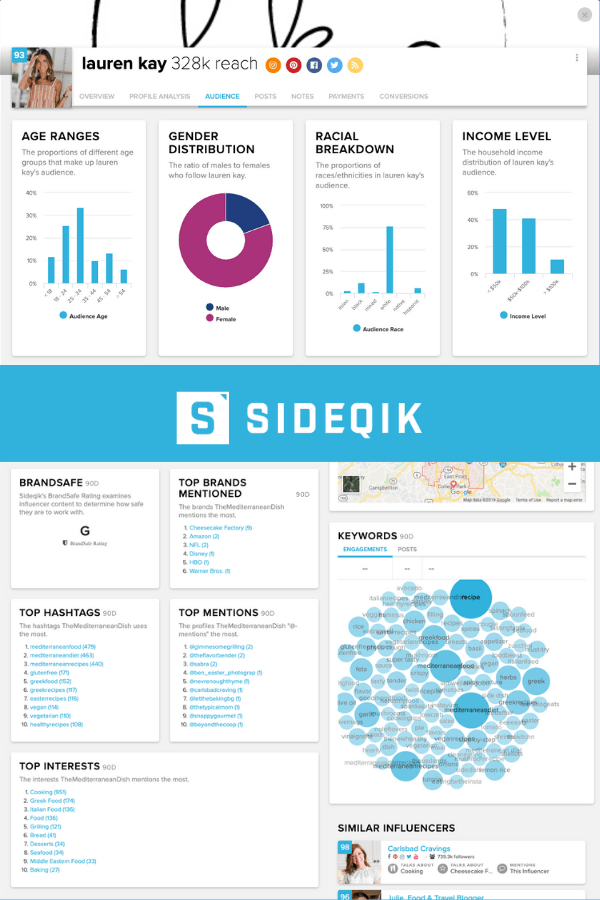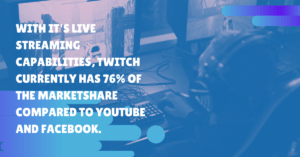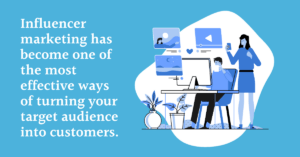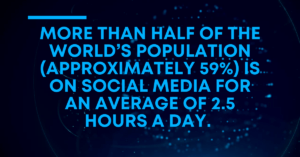Influencer marketing is great for enterprise brands because it allows them to reach a much bigger, targeted audience that has all the qualities that drive interest in your product or service—all it takes is some clever planning and collaboration.
Pairing up and sharing content with brand influencers is a great way not only to get your material seen; it helps brands see a higher overall return on investment (ROI) for that material. In fact, nearly 90% of all marketers find that ROI from influencer marketing is either comparable to or better than other marketing channels.
What is a Digital Influencer?
A digital influencer is someone that will work with your brand to share your content, products or services to the following they’ve cultivated online. Influencers have built not only an audience for their content but a certain level of trust amongst those who follow them.
Brand influencers can be just about anybody, but the right brand fit is crucial. Choosing a brand influencer doesn’t have to be stress-inducing—in fact, if you have defined your target audience and your niche, then this can be simple. First, brands need to know the level of exposure they’re looking for.

Macro-Influencers and Mega-Influencers
Macro-influencers are those with a digital following between 100k and one million. And mega-influencers are those with more than one million followers. Celebrities are a good example of mega-influencers. These people have household name recognition.
Benefits of choosing a bigger name celebrity or macro influencer as your brand advocate include a wide reach of followers, so if your goal is awareness, this may be the way to go. These influencers are often much more expensive, and a big name doesn’t necessarily mean your audience will connect with that persona.
Micro Influencers
Micro-influencers include digital personalities with an online audience of a few thousand to 100,000 followers. They are often a favorite pick for brand influencers because they are still very relatable to the average person. These influencers are considered small-scale personalities who promote brands.
Bloggers are often a good example of micro-influencers. Nearly 30% of consumers are more likely to make a purchase based on a blogger’s recommendation. They are an excellent resource for reaching out to those in particular niches.
Industry experts can also fall into the micro-influencer category. These influencers can include leaders, professional advisors, and journalists. Typically they carry a much higher level of prestige because they have higher qualifications within their given industry.
Nano Influencers
Nano-influencers refers to a group of digital influencers with a smaller following–as few as just ~1000. Their smaller following, while it may not net a brand thousands of views, lends itself to a more authentic engagement with followers:
“Their lack of fame is one of the qualities that make them approachable. When they recommend a shampoo or a lotion or a furniture brand on Instagram, their word seems as genuine as advice from a friend,” says the New York Times.
Nano-influencers can be very flexible and easy to work with–taking direction well and truly engaging with their following–which is one reason many brands love them.
Choosing the Right Digital Influencer for Your Brand in 4 Steps
With so many options in terms of following, style, engagement, personality, and more, choosing the right digital influencer to promote your brand can feel like a huge research project. But it doesn’t have to.
It all comes down to a few key elements in identifying your ideal influencer, just as you would when it comes to defining your brand’s targeted audience. Ready to find the right marketing influencer for your brand? Start by asking yourself these questions.
1. Do They Fit Your Brand?
First, ask “do they fit my brand?”
For example, fashion brands, such as H&M might choose to partner with the likes of macro-influencers like celebrity names or big-name bloggers. Fashion brands want to target the masses, and big names known for their looks and popular fashion bloggers are great for this because they focus more on pieces and trends over topics.
However, for a brand such as Razer, they may be more inclined to partner with micro-influencers, such as Twitch affiliates and industry experts because their main niche is technology and gaming.
2. Who is Their Audience?
 The next question focuses not on your audience’s needs, but on who the influencer’s audience is. Are they going to find your content or product of any use?
The next question focuses not on your audience’s needs, but on who the influencer’s audience is. Are they going to find your content or product of any use?
Again, a technology niche wouldn’t want to choose an influencer with a more fashion/apparel-focused fanbase–though there could be opportunities for crossover if your brand is creative.
Some technology platforms, like Sideqik, include audience demographics and affinities. So you can evaluate if an influencer speaks to the audience you’re looking for before you decide to partner together.
Sideqik’s collective influencer data helps you understand your influencer’s audience and whether or not it’s a good match for your brand. Schedule a demo with our team to find out how Sideqik can take your enterprise influencer marketing to the next level.
3. How Original Are They?
Authenticity is vital because your brand wants to be recognized for quality. All brands, whether they are apparel, techie or supplement based, want to have original and as close to organic engagement with the following they’re reaching via influencers.
This can be where analysis of macro-, micro-, and nano-influencers can come in for your brand. If you are focusing on high-level awareness and reaching as many followers as possible, a macro-influencer may be the right choice. If you want your campaign to be more focused on authentic engagement and conversation, micro- or nano-influencers may work better for you.
Authenticity is what truly bolsters influencer marketing. It’s what separates the purchasing-decision wheat from the paid-sponsorship chafe if you will. Digging into who your fans are really listening to, relating to, and buying from is integral to a paid influencer campaign. Anyone can target celebrities with high followings, but only some campaigns can truly deliver delight and authentic reactions from the influencers they are working with.
4. How Do They Engage with Followers?
Engagement is key, so your marketing influencer needs to be open and available to interact with those who may have questions, comments, and concerns. They don’t have to be experts, just open to talking to those interested.
One great way for an influencer to engage the audience is to host a Q&A. Whether on YouTube or something like Instagram stories, AMAs allow the audience to ask questions and hear straight from an honest source. They also give the opportunity for individual followers to feel heard and empathized with–often one of the goals of choosing influencer marketing for your campaign.
Enterprise Influencer Marketing Made Simple
Sure, a brand would be wise to invest in influencer marketing, and once they’ve found the influencers they want to work with, the next step is to understand the impact they are having on your marketing campaigns.
Sideqik is a software that does just that, and more. It measures content performance, helps execute enterprise marketing campaigns and tacks data all in real-time.
Ready to take on influence marketing with the right tools and support? Let Sideqik help! Contact us today for more information.







